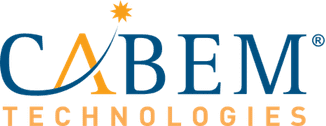All businesses face ongoing danger from cyberattacks since the risk has dramatically increased. According to a statistics, 43% of cyberattacks target small businesses, while data breaches result in an average cost of $3.86 million per incident. Therefore, no organization stays unaffected by such attacks. Meeting regulatory needs and safeguarding your data have become mandatory survival requirements for businesses to succeed in the digital marketplace.
The main weakness lies in using cybersecurity as an absolute defense solution. For your organization to protect its security efforts with regulatory requirements, you should implement a complete cybersecurity framework like the CABEM Technologies cybersecurity framework.
This blog examines the CABEM Tech cybersecurity framework, which combines system security measures with compliance requirements for complex industry standards. We will discuss how can you secure your business against cyber dangers despite maintaining NIST, HIPAA, ISO 27001 regulatory standards, and other related requirements. So, lets explore CABEM cybersecurity framework and reasons behind it being why it a trusted choice for businesses to stay compliant.
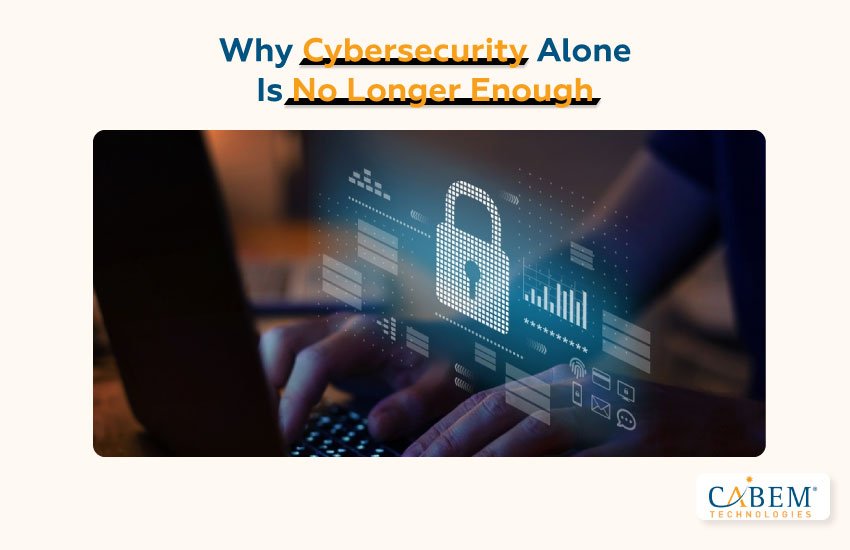
Why Cybersecurity Alone Is No Longer Enough
Cybersecurity is more than the basic implementation of firewalls with antivirus software. A business requires a comprehensive and perpetual security plan to protect itself, and this defense system needs to go beyond basic measures. Organizations maintaining only secure systems face a big gap in their cybersecurity defense since they have not established compliance with industry regulations.
The necessary data safety structure and legal expectations for meeting regulators’ requirements are provided through security frameworks such as NIST and HIPAA, as well as ISO 27001. The absence of compliance with regulatory frameworks makes your business vulnerable to potential data breaches, with legal consequences, while damaging your reputation and eventually losing customer trust.
For instance, the Marriott data breach affected over 300 million customers and led to a $52 million settlement. The hack affected Marriott’s security and its ability to meet compliance regulations, resulting in a significant negative impact on its brand. This example shows why cybersecurity compliance protect not only your data but also your company from costly legal and reputational consequences.
CABEM Technologies’ cybersecurity framework is an all-in-one package for security system protection and compliance requirement fulfillment under one service package. It allows you to achieve optimal protection for your organization by integrating regulatory compliance and security requirements.
Concerned About Cybersecurity?
Read our blog about our strategies and tools to defend customer businesses from modern cyber threats in 2025, “How CABEM Tech Secures Your Business Against Cyber Threats in 2025“.
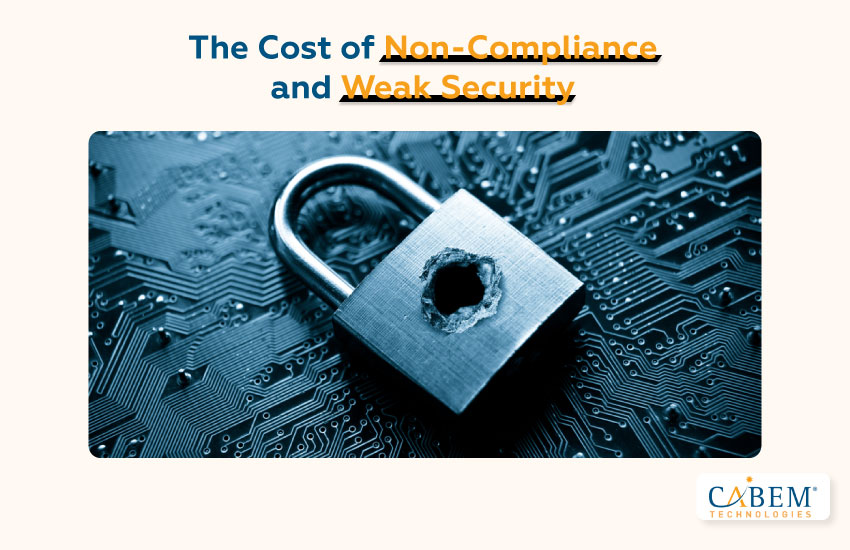
The Cost of Non-Compliance and Weak Security
Security compliance violations result in expensive penalties for organizations that fail to meet their necessary regulations. The rising value of data and growing corporation sizes create an enormous threat from cyberattacks, which also increases potential non-compliance penalties.
Most organizations spend their efforts on system security, yet ignore compliance essentials. The result? Exposure to severe financial, legal, and reputational repercussions. Organizations must understand the main negative effects that result when they choose to disregard security and compliance procedures.
- Financial Loss (Fines, Lawsuits, Downtime)
- Reputational Damage
- Loss of Contracts or Certifications
- Legal Liabilities
1. Financial Loss (Fines, Lawsuits, Downtime)
Financial losses arise as one main consequence of disregarding cybersecurity regulations. The economic losses stemming from regulatory fines, costly lawsuits, and unplanned downtime prove substantial after non-compliance.
- Fines and Penalties: Companies that fail to comply with the General Data Protection Regulation (GDPR) standards risk being fined up to 4% of their global revenue or €20 million, whichever is a huge amount indeed. HIPAA imposes financial penalties for every violation that range from $100 to $50,000.
- Legal Costs: The expenses associated with data breaches expand to include substantial legal expenditures because of resulting extended lawsuits. Organizations must defend against class-action lawsuits, which their customers can launch against vendors and regulatory institutions. Such lawsuits lead to legal costs alongside settlements that pose major financial risks by costing millions of dollars.
- Downtime: Data breaches combined with system outages triggered by cyberattacks or security regulations non-compliance lead to the reduction of time availability, showing that IT downtime causes organizations to lose $5,600 in revenue every minute, resulting in hundreds of thousands of dollars worth of revenue loss during each system outage hour.
2. Reputational Damage
An organization experiences long-term effects on its reputation following data breaches and non-compliant security incidents. The digital age has raised customer awareness about data handling by corporations, as breaches cause severe damage to brand trustworthiness.
- Loss of Customer Trust: Once trust is broken, gaining customer loyalty may be hard or impossible. According to KPMG’s poll, 86% of consumers are willing to discontinue doing business with a company that does not protect their data.
- Negative Media Attention: High-profile data breaches receive extensive media coverage, which can result in negative press and degraded public image. This might have a long-term negative impact on the company’s reputation.
- Brand Recovery Costs: Restoring a brand after a breach requires much more than basic efforts. Research by PwC Australia indicates that 45% of customers leave the affected companies after data breaches, while they need to invest long-term marketing resources and substantial funds to restore brand prominence.
3. Loss of Contracts or Certifications
Compliance is frequently a requirement for conducting business in certain industries or sectors. Business operations suffer when organizations fail to meet regulatory standards because they lose current contracts and block the possibility of acquiring new business partners.
- Loss of Government Contracts: Organizations providing services to government authorities need to be NIST and CMMC compliant to maintain their contracts. Not meeting compliance standards may end in companies giving up essential contracts and locking them out of upcoming business project bidding opportunities.
- Loss of Industry Certifications: Firms must maintain their industry certifications, including ISO 27001 and SOC 2, because these standards demonstrate the company’s adherence to security requirements in their field. The certifications stop businesses from working with important clients because vendor vetting requires these certifications.
- Inability to Secure New Partnerships: Many private-sector businesses establish standards that partners must fulfill to gain new partnerships. Non-compliance with these requirements will block the way to getting new business partnerships and might force you to lose current business partnerships.
4. Legal Liabilities
- Healthcare, finance, and defense sectors must follow rigorous cybersecurity standards that their operations must fulfill. Not complying with these particular standards puts your organization at significant legal risk.
- Healthcare (HIPAA): Healthcare violations can face HIPAA violation penalties between $100 and $50,000 when each infraction. The consequences can mount quickly, especially when a breach involves a large amount of sensitive medical data.
- Defense Contractors (CMMC): Contractors involved with U.S. Department of Defense operations must fulfill the Cybersecurity Maturity Model Certification standards called CMMC. Defense contractors and Departments that do not manage to meet these requirements risk losing their contracts, with a permanent ban on submitting future project proposals to DoD.
- Federal and Industry Regulations (NIST): Private companies, along with federal agencies, follow NIST 800-53 or NIST 800-171 standards when it comes to compliance regulations. Organizations that fail to follow these regulations will face federal investigations and receive penalties and legal repercussions, primarily when they process sensitive government or defense information.
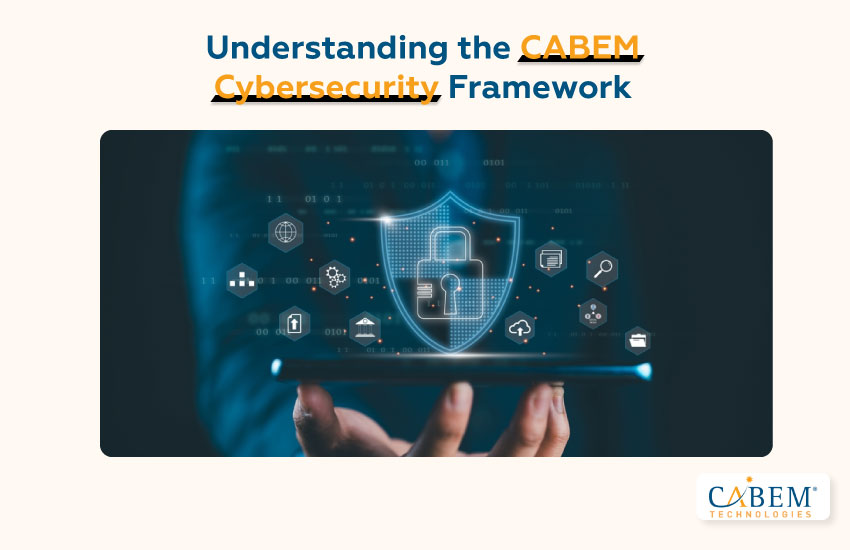
Understanding the CABEM Cybersecurity Framework
The bottom line: non-compliance isn’t just costly; it’s dangerous. Your organization requires an information security framework that defends against cyberattacks and enables compliance to fulfill its requirements. CABEM Technologies serves as the solution at this point.
- NIST 800-171 & SP 800-53
- CMMC Levels 1–3
- ISO 27001
- HIPAA / PII / SOC 2
1. NIST 800-171 & SP 800-53
The NIST 800-171 standard contains specifications that help organizations protect Controlled Unclassified Information (CUI) stored in non-federal systems and organizations. All organizations requiring a federal contract, with sensitive data, must implement this compliance standard.
- Guidelines for Protecting CUI: It requires following the guidelines and fulfilling security requirements to protect the privacy of CUI.
- Alignment with NIST SP 800-53: Provides a foundation for federal information systems’ security.
- Mandatory for Federal Contractors: Required for organizations working with federal agencies.
- Continuous Updates: A process of continuous revisions and updates enables manufacturers to respond to new security risks as they emerge. (2NIST Publications)
The National Institute of Standards and Technology (NIST) specifies that non-federal organizations must follow these guidelines to protect sensitive information classified as CUI in their systems. (NIST Computer Security Resource Center)
2. CMMC Levels 1–3
Cybersecurity Maturity Model Certification (CMMC) is a unified standard for cybersecurity requirements for the Department of Defense supply chain. The security practices described in the document become mandatory for contractors.
- Level 1 (Foundational): Basic Federal Contract Information (FCI) safeguarding procedures form the foundation of Level 1 standards.
- Level 2 (Advanced): Intermediate cybersecurity practices.
- Level 3 (Expert): These are advanced cybersecurity methods that defend Controlled Unclassified Information (CUI).
- Mandatory for DoD Contractors: Mandatory for DoD Contractors, also required for organizations working with the DoD. (dodo.defense.gov)
The Department of Defense demands high levels of security protection to safeguard sensitive defense industrial base information, as stated on the dodcio.defense.gov website.
3. ISO 27001
Organizations worldwide use ISO 27001 as the international standard to establish information security management systems. The standard enables systematic control of important corporate data through an organized framework. (ISO)
- Risk-Based Approach: An information security risk-based method to discover security threats and their subsequent protection measures.
- Comprehensive Control Set: Organizations implementing the Comprehensive Control Set must utilize its 93 controls, which focus on different areas of security.
- Global Recognition: This standard is accepted and implemented worldwide by all organizations.
- Continuous Improvement: Continuous Improvement encourages ongoing enhancement of security measures. (IT Governance USA)
The International Organization for Standardization lists ISO 27001 as the standard for creating effective information security management systems that protect sensitive data. (IT Governance USA)
4. HIPAA / PII / SOC 2
Organizations that process Protected Health Information (PHI) and Personally Identifiable Information (PII) need to fulfill HIPAA requirements while achieving SOC 2 compliance.
- HIPAA: Regulates the protection of PHI in healthcare settings.
- PII: Ensures the protection of personal data in various industries.
- SOC 2: SEC 2 ensures the safekeeping, operational functionality, data privacy, and integrity, with maintenance accessibility, in addition to secure information protection.
- Regular Audits: Ensures continuous compliance and data protection. (Wikipedia)
Healthcare organizations must follow these regulations and conduct enforcement activities provided through HIPAA guidelines by the U.S. Department of Health and Human Services.
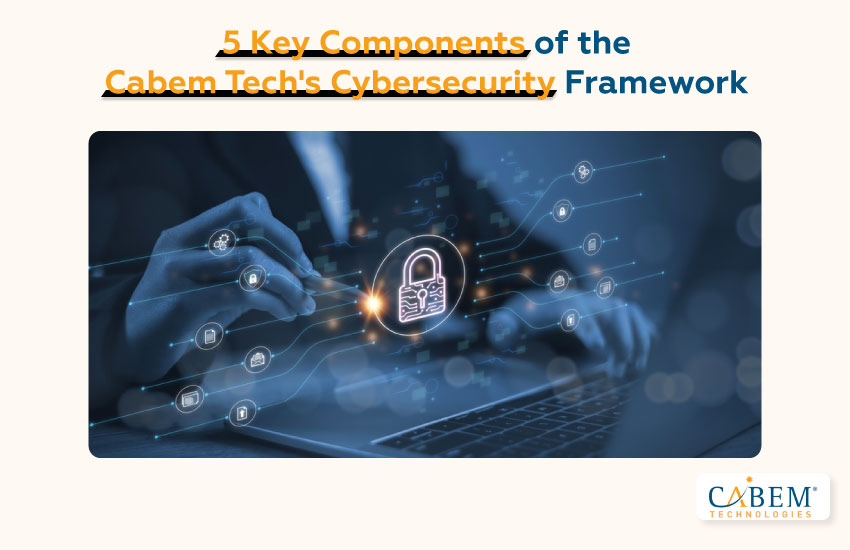
5 Key Components of CABEM Tech’s Cybersecurity Framework
CABEM Technologies understands that security is crucial to defend system assets and make sure complete data protection by adopting strategic compliance-based measures. CABEM cybersecurity framework dedicates detailed attention to resolving multidimensional business challenges of the present era. This approach helps your organization uplift and elevate in various ways.
- Risk Assessment Engine
- Compliance Mapping Tool
- Custom Policies & Role-Based Access Control
- Automated Documentation & Reporting
- Continuous Monitoring & Support
1. Risk Assessment Engine
Organizations should start their cybersecurity efforts by analyzing potential security threats. It can easily identify organizational vulnerabilities, their possible impact, and ways to decrease risk factors.
IT Governance USA states that security risk assessment enables organizations to determine their weakest cybersecurity areas and focus improvement efforts effectively in the cybersecurity program structure. (IT Governance USA)
- Comprehensive Threat Identification: The system employs sophisticated and advance detection tools to recognize all sorts of system vulnerabilities, including outdated software programs and system errors.
- Impact Analysis: Impact analysis involves systematically evaluating what financial losses, operational difficulties, and reputational risks.
- Prioritization of Mitigation Efforts: It involves ranking or dividing risks into different levels based on severity and likelihood. It ensures effective allocation of resources.
- Continuous Reassessment: Regular risk assessment updates are performed to handle emerging security threats.
2. Compliance Mapping Tool
It often becomes difficult to handle multiple regulatory needs. CABEM Cybersecurity framework’s Compliance Mapping Tool helps your organizational cybersecurity practices achieve industry-standard alignment, which simplifies the compliance process.
Secureframe explains that control mapping brings two main advantages: it accelerates the time needed to achieve compliance for various frameworks and helps organizations build effective compliance plans. (Secureframe)
- Multi-Framework Alignment: The Compliance Mapping Tool controls across NIST ISO 27001 and HIPAA, and other standards for total compliance coverage.
- Real-Time Tracking: The software gives real-time updates about compliance status, which identifies segments that need immediate focus.
- Audit Preparation: The tool helps streamline the audit procedures because it creates orderly records for compliance verification.
- Gap Analysis: Gap analysis helps to detect the differences between present operational procedures and regulatory standards for strategic improvement and development. (Secureframe)
3. Custom Policies & Role-Based Access Control
Organizations must establish unique policies with adequate access limits in order to prevent internal vulnerabilities. Our approach applies specific access policies with RBAC functionality, which enables correct access permission allocation.
- Tailored Security Policies: The system creates security policies that match the organization’s individual needs and its risk management requirements.
- RBAC Implementation: The system utilizes RBAC implementation by providing roles to users that grant them access only to relevant resources.
- Least Privilege Principle: Minimizes potential damage by limiting access rights to the bare minimum required.
- Regular Access Reviews: Repeated access reviews are conducted to modify access permissions when organizational roles transform.
Identity Management Institute explains that RBAC access control mechanisms create substantial protection gains and reduce unauthorized data entry and intrusions into sensitive databases. (Identity Management Institute)
4. Automated Documentation & Reporting
Operational transparency with compliance requires a perfect system of recording accurate data. The system automatically generates documented reports that remain precise and standard across all entries.
- Automated Evidence Collection: Automated evidence collection functions through a computerized system that eliminates worker involvement to reduce errors while minimizing employee workloads.
- Audit-Ready Reports: The system produces documents that adhere to auditing regulations, thus streamlining the audit operations.
- Real-Time Updates: Keeps documentation current with ongoing activities and changes.
- Centralized Repository: Stores all documentation in a secure, easily accessible location.
According to Secureframe, an automatic documentation system and audit-ready reporting functions enhance compliance operations while minimizing staff workloads and improving record precision for more simplified audits and nonstop compliance support.
5. Continuous Monitoring & Support
Regular monitoring of threats remains vital because these risks constantly change their form. CABEM’s cybersecurity framework helps organizations maintain 24/7 support and monitoring, which simultaneously ensures both security coverage and compliance.
- Real-Time Threat Detection: The system uses state-of-the-art monitoring tools that help detect and respond to threats that occur in real-time.
- Proactive Incident Response: Security incidents gain proactive control through developed strategies that prevent incidents from entering critical phases.
- Regular System Audits: The organization performs scheduled system audits that evaluate system integrity and its compliance status.
- Expert Support Team: Provides access to cybersecurity professionals for guidance and assistance.
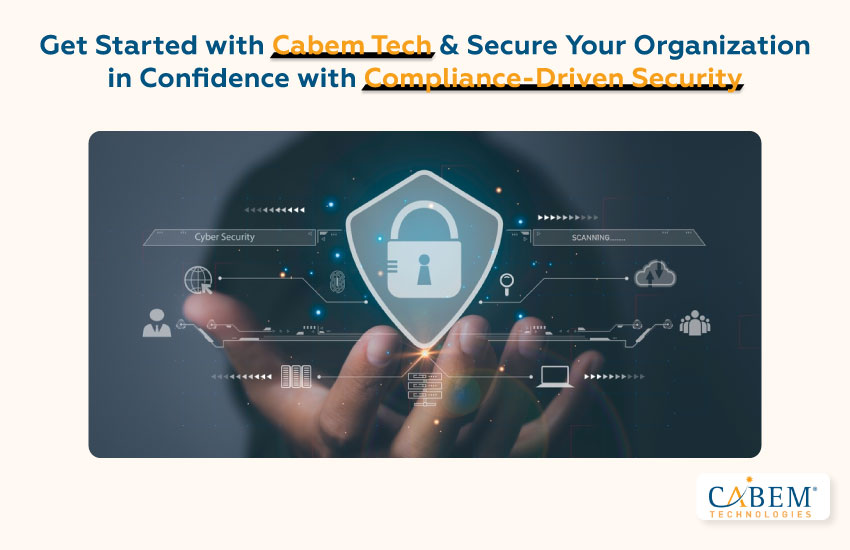
Get Started with CABEM Tech & Secure Your Organization with Confidence with Compliance-Driven Security
The IT environment of organizations becomes more transparent through continuous monitoring because it enables active observation of network security with user behavior and system log activities to discover security threats and irregularities.
Adopt the CABEM Tech Cybersecurity Framework and Secure Your Organization with Confidence with Compliance-Driven Security
Organizations need to upgrade both their security and compliance practices. The partnership with CABEM Technologies secures your business from cybersecurity threats while simultaneously fulfilling regulatory requirements. The cybersecurity framework from CABEM Technologies will help you achieve complicated standards, so you can concentrate on business expansion without worrying.
You should not leave your business exposed to cyberattacks and regulatory consequences. Contact us now to get a comprehensive cybersecurity framework from CABEM Technologies today to protect your business and secure your future.
FAQs
What is the role of the compliance framework in cybersecurity?
Compliance frameworks are guidelines to secure sensitive data. It helps meet both industrial requirements and legal obligations. Compliance frameworks enable businesses to secure their information and prevent noncompliance enforcement penalties, which cost money.
What are the benefits of a cybersecurity framework?
A cybersecurity framework delivers various advantages through a better security position. It minimizes data breach risk, enhances compliance management, and elevated customer trust. It also enables organizations to detect emerging threats.
What are the consequences of non-compliance in cybersecurity?
The failure to follow security guidelines results in big fines, damaged reputation, severed business partnerships, and legal entanglements. It has a major impact on healthcare organizations, financial entities, and governmental agencies.
What are the key components of the cybersecurity framework?
Security frameworks are composed of five important elements. These include risk evaluation, compliance tracking, role-based authorization controls, automation for documentation and reporting, and continuous monitoring.
